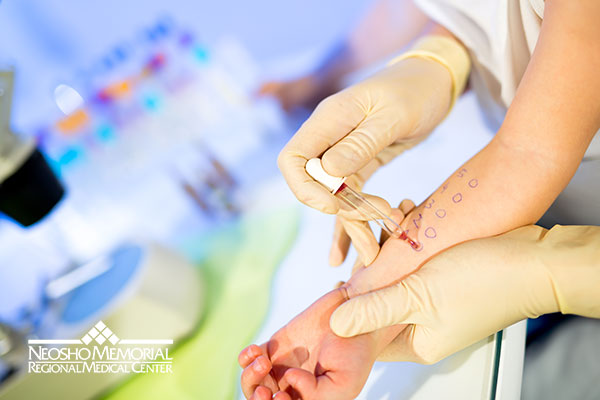Penicillin Allergy Testing
 Antibiotic Use and Resistance
Antibiotic Use and Resistance
Widespread use of antibiotics began in the 1940s. People thought penicillin and other antibiotics were miracle drugs. They were able to cure previously untreatable bacterial illnesses.
However, bacteria are very adaptable. They can change genetically to resist antibiotics. The more antibiotics used, the more common resistant strains of bacteria become.
Bacteria known as superbugs can develop, which are resistant to many antibiotics. Your health provider wants the most specific medication to treat your illness and uses antibiotics when necessary.
Do you have penicillin allergy?
Thirty million people believe they are allergic to penicillin; in fact only 10% are truly allergic. The reason you want to know is that it gives you and your provider more treatment options and possibly less expensive options.
Having a documented penicillin allergy can increase the use of broad-spectrum antibiotics, which are associated with increased risk for antibiotic resistance, increased use of less effective drugs, and higher prescription costs. Allergy testing can confirm if you have a true allergy.
Insurance coverage
Medicare and most insurance providers cover penicillin allergy testing. A referral from your healthcare provider is needed to schedule the test. Contact your healthcare provider for further information about testing and insurance coverage.
Testing is completed at Neosho Memorial's Observation Unit and consists of two steps, a scratch test and intradermal test. If, at any point you have a reaction to the testing, the test is stopped.
Scratch Test
A small drop of each of the four agents is placed on your forearm. A small applicator makes a tiny scratch at each of four sites. A trained professional watches for a reaction before continuing testing.
Intradermal Test
On five sites on your skin, a tiny needle is inserted just under the skin, and a small bleb (or bubble) created. Trained staff monitors the sites for reactions to determine whether or not you have a true penicillin allergy.
Once you complete both the scratch test and intradermal test with no signs of a reaction, your documented penicillin allergy can be removed, allowing your health provider more treatment options for you in the future.
Appointments
Penicillin allergy testing requires a referral from a medical provider. Each patient completes an assessment to see if they will benefit from penicillin allergy testing and if test criteria are met, an appointment at Neosho Memorial is made.
Facts about penicillin allergy
From the US Centers for Disease Control (CDC):
- 80% of patients with a penicillin allergy outgrow the sensitivity after 10 years.
- Penicillin is the most commonly reported drug allergy.
- 10% of patients report penicillin allergy.
- 9 out of 10 reporting penicillin allergy are not truly allergic.